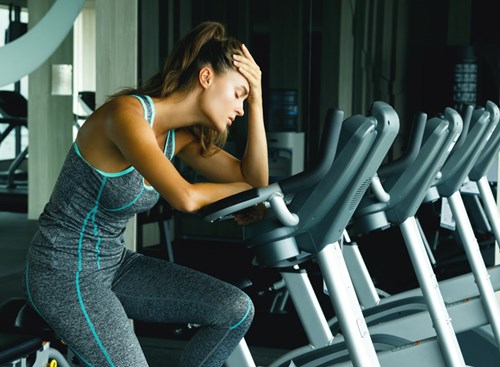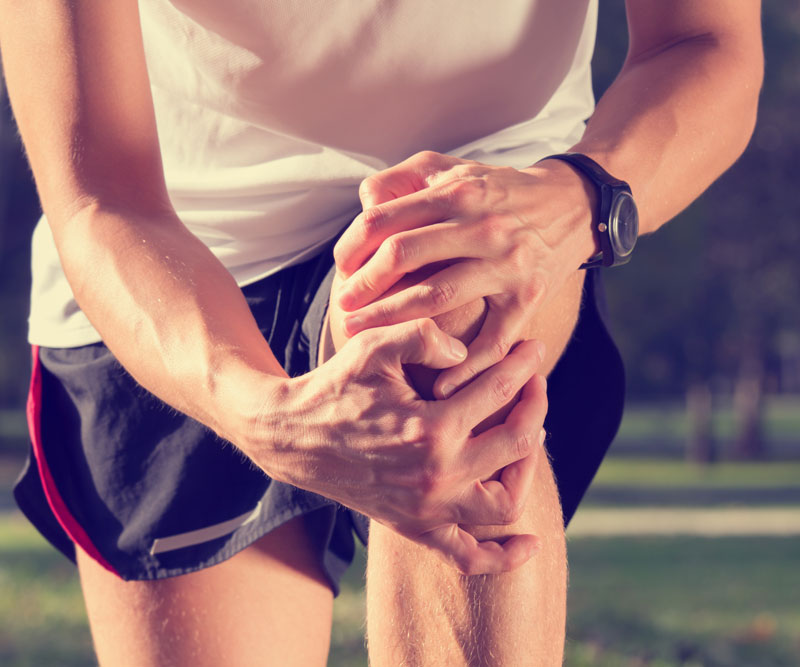
Examining All Angles of the Female Athlete Triad
Diet and exercise have many benefits on people’s health and well-being, but is there a point when too much exercise and a strict diet can be detrimental to someone’s health?
The female athlete triad can occur when females have an imbalance of calories “in” versus calories “out,” which leads to multiple complications to their health and athletic performance.
Although the diagnosis is called the “female athlete triad,” females do not have to be a designated athlete to have this problem.
What is the Female Athlete Triad?
As its name suggests, the female athlete triad consists of three components:
- Low energy availability.
- Menstrual dysfunction.
- Low bone mineral density.
Low energy availability means that there is a negative caloric balance – the athlete is either burning more calories than she is consuming, or she is not eating enough to replenish the calories she is burning.
Although some athletes may have disordered eating, such as anorexia or bulimia nervosa, they do not need to be diagnosed with disordered eating to have the female athlete triad.
In fact, many active individuals do not have disordered eating and do not realize they are not eating enough or are burning too much calories.
This is important because calories provide energy, which is used for exercise; however, you need to have remaining energy leftover for other bodily functions, such as healing, heart function and menstruation.
If there is negative caloric balance or less energy available, some bodily functions, such as those used to support reproductive, heart and bone health, will be altered.
Menstrual dysfunction can occur if females do not get their first periods by age 16 years old (primary amenorrhea).
Menstrual dysfunction also occurs if the patient had regular periods and misses three or more periods in a row, or if she had irregular periods and misses her period for six months (secondary amenorrhea).
Menstrual dysfunction is linked to low energy availability due to alterations in hormones.
Low bone mineral density is diagnosed by a DEXA bone scan and can lead to weak bones, fractures, osteopenia and osteoporosis.
The American College of Sports Medicine defines low bone mineral density as having a history of nutritional deficiencies, low estrogen hormone and prior stress fractures.
Low bone mineral density is linked to both low energy availability and menstrual dysfunction.

What are the Risk Factors for the Female Athlete Triad?
The female athlete triad is typically seen in athletes who participate in sports with weight classes and consequences for weight gain (rowing, wrestling), aesthetic sports (gymnastics, cheerleading, diving) and sports where a low body mass index is seen as an advantage (cross country).
We sometimes see this in early sport specialization and training.
The female athlete triad can also be seen in those who are at risk for disordered eating (anorexia, bulimia) – traits can include perfectionism, poor body image, anxiety, a strict diet and weight control.
Females who diet to eat healthier but have strict restrictions on food types and portions (vegetarian, vegan, gluten free, etc.) also are at a greater risk for developing this condition, as are athletes who have an intense exercise regimen or feel pressure to succeed.
What are the Signs & Symptoms of the Female Athlete Triad?
Common signs and symptoms of the female athlete triad can include the following:
- Changes in weight (continued weight loss), exercise and/or diet.
- Menstrual irregularities (not getting periods).
- Multiple stress reactions or stress fractures, especially if sustained without high-impact injuries.
- Lanugo (fine) hair.
- Low heart rate and low blood pressure.
- Preoccupation with food and weight (including fear of weight gain).
- Avoiding team meals and eating alone.
- Lying about how much food has been consumed.
- Mealtime rituals.
- Overtraining and excessive exercise.
- Poor sports performance and fatigue.
The female athlete triad is usually diagnosed after other possible causes for amenorrhea are evaluated and ruled out.

What Complications are Associated with the Female Athlete Triad?
If the energy deficit is not treated, bone mineral density and strength may not be reversed or regained, which can lead to fractures, osteopenia and osteoporosis.
There is the possibility that patients with the female athlete triad may never have as strong bones as patients without the female athlete triad.
Other side effects of the female athlete triad include:
- Infertility.
- Vaginal and breast atrophy.
- Heart problems.
- Electrolyte disorders and imbalances.
- Gastrointestinal problems.
- Kidney complications.
- Mental illness and suicide.
Although females feel good about losing weight and possibly even have better sports performance initially, there may be a point when they lose control of their behavior and are at risk for serious complications due to not adequately replenishing their calories and not getting their periods.
They may lose bone strength and density, which may never be regained.
Furthermore, low energy availability can lead to loss of fat and muscle, electrolyte abnormalities and dehydration, which will eventually lead to poor sports performance and risk for injuries.
If any of the above sounds familiar – you are concerned about your weight, not getting your period or are having frequent stress fractures or stress reactions – make an appointment with your primary care physician.
Published on: August 9, 2019





